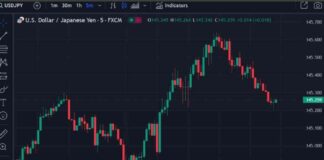The recent rise in stock market volatility has caused fear among investors, with the VIX hitting its highest levels of the year. This volatility can be attributed to profit-taking by investment managers after a strong run in stocks, particularly in big technology stocks. Additionally, some cracks in the economy and job market have started to show, although not a cause for major concern.
Looking ahead, the Federal Reserve is expected to begin a rate cut cycle, making fixed income rate products less attractive and leading investors to seek quality yield opportunities. Two high-yield dividend ETF options in the market are the iShares Core High Dividend ETF (HDV) and the Vanguard High Dividend Yield Index Fund ETF (VYM).
The iShares Core High Dividend ETF focuses on companies with wide economic moats and high-quality liquidity on their balance sheets. Stocks are selected based on dividend yield, with 75 stocks considered and weighted by the total dollar amount of dividends paid. On the other hand, the Vanguard High Dividend Yield ETF aims to track the investment performance of the FTSE High Dividend Yield Index, focusing on large-cap companies selected based on dividend yield ranking and market capitalization.
Both ETFs have outperformed the Schwab U.S. Dividend Equity ETF since the beginning of 2023, with VYM showing a 14% increase and HDV climbing 9%. In terms of total return, VYM has returned 20% compared to 16% from HDV over the same period. Looking at the past decade, both ETFs have returned well over 100%, with VYM returning 153% and HDV returning 118%.
In terms of dividend stats, HDV focuses on consistent dividend payers with a five-year dividend growth rate of less than 5% per year and a current yield of around 3.4%. VYM, on the other hand, has paid a larger dividend for 13 consecutive years with a 5-year dividend growth rate around 6%.
When analyzing the portfolio construction, HDV is more exposed to sectors like Energy, Consumer Staples, Health Care, Utilities, and Communication Services, while VYM has a different sector breakdown with Financials, Consumer Staples, Technology, Health Care, and Industrials leading the way. The top 10 holdings in HDV account for 58% of the portfolio, while VYM has 556 total positions with the top 10 holdings making up 25% of the portfolio.
Ultimately, the choice between HDV and VYM depends on individual preferences and investment goals. HDV offers a higher yield and a defensive approach, while VYM provides more growth potential with a lower yield. Both ETFs are high-quality options that cater to different investment strategies.

















